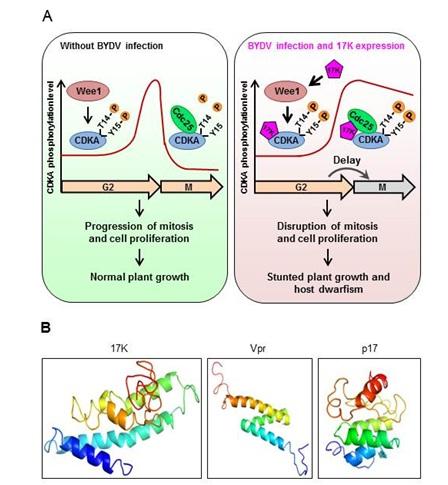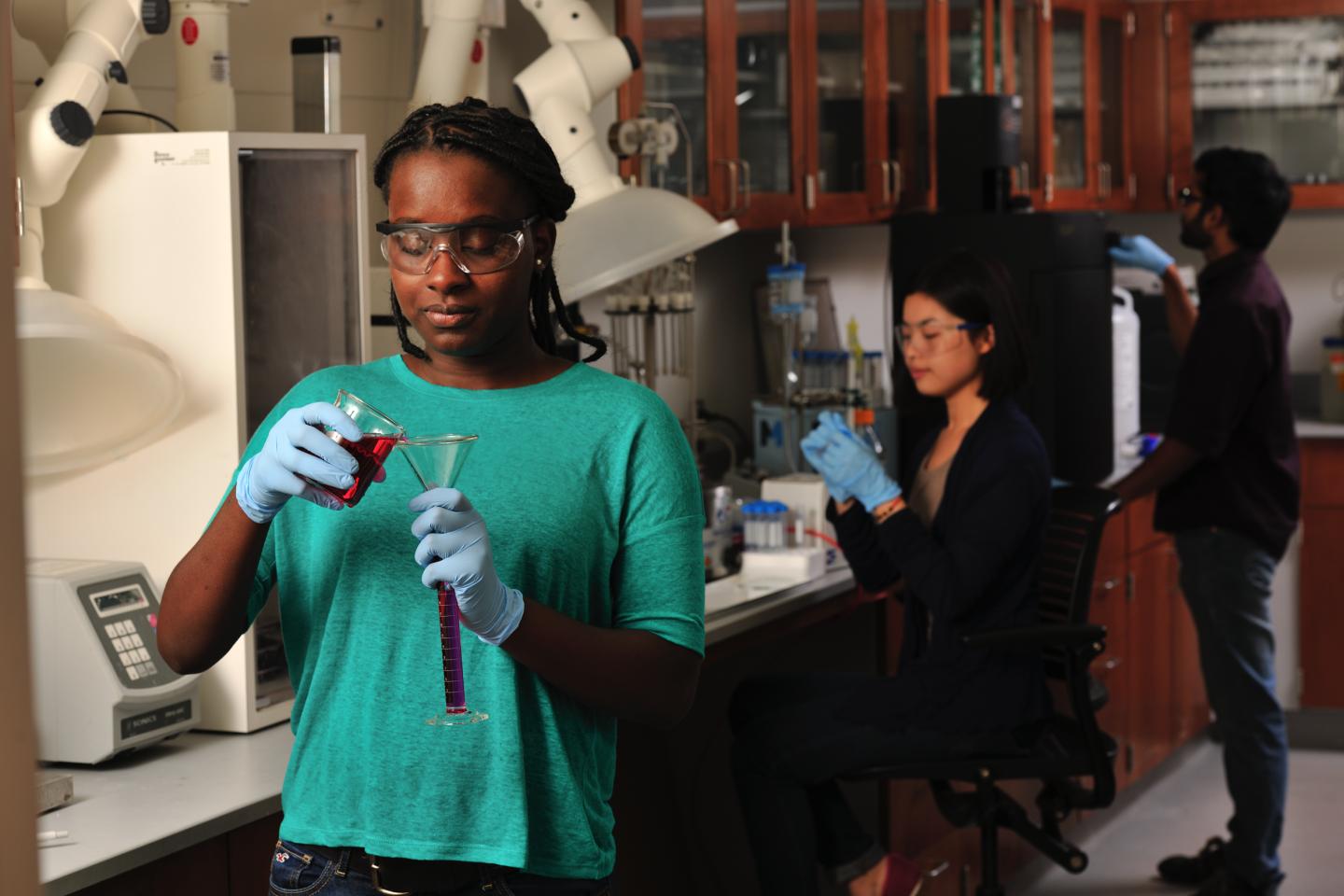
Credit: IGDB
Viruses are ubiquitous pathogens that cause severe infectious diseases in both humans and agricultural crops. As most viruses have simple genomes and encode only a few proteins, they must usurp host cell resources for propagation. Understanding what host processes are disrupted and which viral proteins are involved greatly facilitate the design of therapeutic measures for controlling viral diseases in humans and crop plants.
Recently, researchers from the Institute of Genetics and Developmental Biology (IGDB) of the Chinese Academy of Sciences discovered a plant viral protein named 17K that disrupts host cell division to promote its own propagation in infected tissues. They also linked it structurally to certain animal virus proteins.
The work was published online in Science Advances on May 13. It is the result of a decade-long collaboration between the IGDB group led by Dr. WANG Daowen and the laboratory of Dr. ZHAO Yuqi at the School of Medicine of the University of Maryland.
The 17K protein is conserved in a group of cereal-infecting viruses called barley yellow dwarf viruses (BYDVs). Even though BYDVs have been studied for more than 60 years, they frequently cause severe epidemics in global wheat, barley, maize and oat crops, with yellowing and dwarfing as typical results.
The researchers hypothesized that one or more BYDV proteins may inhibit host cell growth by disrupting cell division, a fundamental process required for plants and animals to grow, develop and reproduce.
By testing seven BYDV proteins individually in fission yeast – a model for cell division studies – 17K was found to be the only BYDV protein capable of inhibiting cell growth.
Through detailed molecular genetic and biochemical analyses, the researchers found that the 17K protein can disrupt cell division, and thus cell proliferation, on its own as well as in barley plants naturally infected by BYDV. They further showed that 17K perturbed the function of Wee1-Cdc25-Cdc2/Cdk1, a molecular switch for the orderly progression of cell division in both plants and animals.
Since the study’s datasets are all consistent with the idea that 17K – by its ability to disrupt cell division – is a key factor in promoting [or eliciting] host dwarfism by BYDVs, 17K may be a future target in BYDV control.
Notably, the researchers observed that BYDV 17K resembles several animal viral proteins, e.g., the Vpr protein of human immunodeficiency virus 1 (HIV-1) and the p17 protein of avian reovirus (ARV), in the inhibition of cell division and growth.
These three viral proteins represent a novel class of cell division regulators conserved between unrelated plant and animal viruses. They share similarities in secondary structure as well as some amino acid residues crucial to disrupting cell division. How they evolved and their implication for comparative studies of plant and animal viral pathogenesis are interesting questions for further research.
###
Media Contact
QI Lei
[email protected]
Related Journal Article
http://dx.





